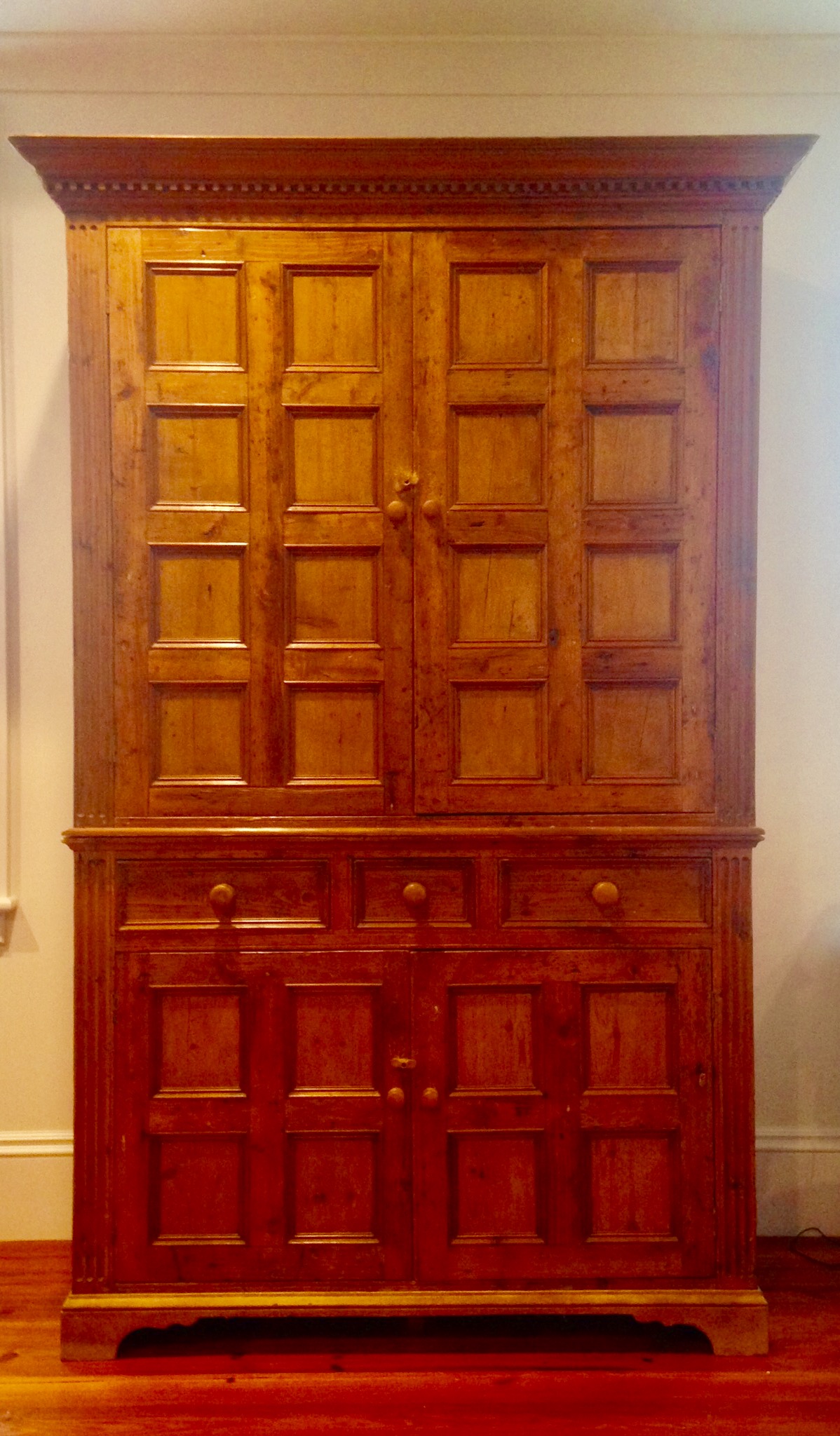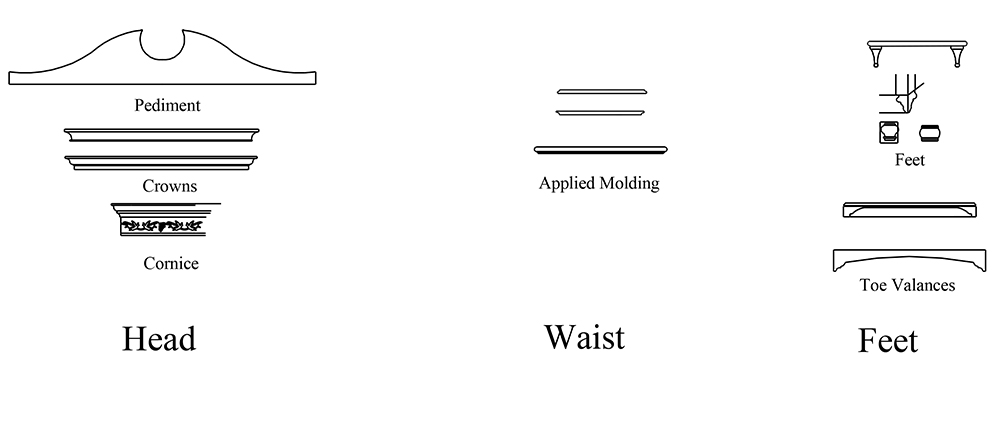June 20, 2017 | carly stewart

With Paul Lazes of Rock Pond Kitchens in Martha’s Vineyard.
Initially, all cabinets start out as a simple box, just as a room begins as a simple box and remain simple for modern applications. The use of moldings is the hallmark of traditional design and how they are used is the hallmark of sophisticated design.
Similar to a person, a cabinet can be divided into 3 areas: the Head, Waist and Feet. With cabinets, the top (the head) is referred to as the Crown Molding, Cornices and Pediments. The middle (the waist) is made up of Applied Molding and at the bottom are the Feet - which are referred as Toe Valances or Feet. All this can be applied to a freestanding cabinet such as a Hutch or with Kitchen Cabinets (divided between the Wall Cabinets and the Base Cabinets which are on the floor.)
Personally, I consider moldings akin to whipped cream - it goes with many types of dessert and, properly paired, it enhances the experience. The same is true for moldings. Used proportionally and with good taste, they develop the overall design of cabinetry and bring sophistication to an otherwise ordinary box.

I divide Crown Moldings into 3 categories: Standard Crowns, Cove Crowns and Articulated Crowns. Standard Crowns include an “S” curve. Cove Crowns are a single sweep for most of the molding and Articulated Crowns use a variety of moldings applied to the background as in the photo. First off, Articulated Crowns are the most difficult to properly use. They add a great deal of activity and need to be proportioned properly or look clumsy or too fussy. Standard and Cove Crowns are much easier to properly integrate into a cabinet. There are no rules about how to size crowns in cabinetry, but I rarely use a crown taller than 3-1/2" on either a kitchen wall cabinet or a freestanding cabinet unless the room is taller than 8-1/2 feet.
Applied Moldings (at the waist) I divide into 2 categories: Projecting (similar to a Crown) or Returning.
Feet, too, are divided into 2 categories - either free standing feet or carved Toe Kick Valances. Free Standing Feet can be any shape - square, curved, short or tall. Valances also are cut in many ways but tend to be a variation of what is shown below. When it comes to a freestanding cabinet, I stay away from the standard 4" tall Toe Kick height to give the cabinet some sense of originality. I typically make them 6-8” tall.


Add new comment